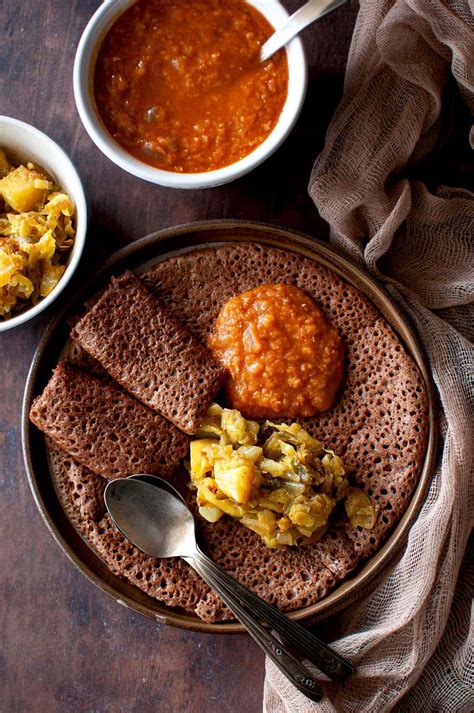Injera: The Ethiopian Flatbread That Will Change Your Life
Injera. Just the word itself conjures up images of vibrant Ethiopian feasts, the spongy, slightly sour flatbread acting as both plate and food. If you've never had the pleasure of trying this unique bread, you're in for a treat! This comprehensive guide will walk you through making your own injera at home, step-by-step. Get ready to elevate your culinary game!
What is Injera?
Injera is a sourdough flatbread made from teff flour, a tiny grain native to Ethiopia and Eritrea. Its slightly tangy flavor and unique, spongy texture are what make it so special. Unlike many other flatbreads, injera is often served as both the plate and the food, allowing for a truly immersive dining experience. It's the foundation of many traditional Ethiopian dishes and is absolutely essential to understanding Ethiopian cuisine.
Key Ingredients for Authentic Injera:
-
Teff Flour: This is the cornerstone of injera. You'll need both brown teff flour (for a nuttier flavor and darker color) and white teff flour (for a lighter color and milder flavor). A blend is often preferred. Finding teff flour might require a visit to a specialty store or online retailer. Don't substitute with other flours; the unique properties of teff are crucial.
-
Water: Use filtered or spring water for the best results.
-
Starter (Injera Batter): This is where the magic happens. The fermentation process gives injera its distinctive sourness and spongy texture. We'll cover the starter preparation below.
Making the Injera Starter (Essential Step!):
This step is crucial for authentic injera. It's a sourdough starter, meaning it requires time and patience.
Day 1:
- Mix: In a large bowl, combine 1 cup of teff flour with 2 cups of water. Stir well to ensure no lumps remain.
- Ferment: Cover the bowl with a clean cloth and let it sit at room temperature (ideally around 70-75°F) for 24 hours. The mixture should begin to ferment and bubble.
Day 2 - Day 7 (or longer):
- Daily Stirring: Over the next several days, stir the batter once or twice a day. You'll notice increasing bubbling and a slightly sour aroma. This is a sign of healthy fermentation.
- Consistency: The batter should be thin and slightly runny, like pancake batter. Adjust the consistency with water if needed.
- Storage: Keep the batter covered with a cloth to allow for air circulation.
Important Note: The fermentation time can vary depending on temperature and humidity. The batter is ready when it develops a strong, pleasant sour aroma. This process of building a starter can take several days to a week.
Cooking the Injera:
Once your starter is ready, you’re ready to cook! You'll need a non-stick pan (ideally a flat, wide pan) suitable for medium-low heat.
- Heat the Pan: Heat the pan over medium-low heat. It should be warm to the touch but not too hot.
- Pouring: Pour a thin layer of batter (approximately ¼ cup) onto the hot pan, swirling it to create an even circle.
- Cooking: Cook for 1-2 minutes, until small holes begin to appear on the surface and the edges start to pull away from the pan. You’ll notice the top surface will have a slight bubbly texture.
- Flipping (Optional): While not necessary, you can carefully flip the injera for a few seconds to cook the other side. Be very gentle here!
- Removing: Use a spatula to carefully remove the injera from the pan.
- Stacking: Stack the cooked injera on top of each other to keep them soft and warm.
Serving your Injera:
Injera is traditionally served with various stews (wats), often arranged on top of the injera itself. This creates a vibrant and flavorful presentation. Experiment with different Ethiopian dishes to discover your favorite combinations.
Tips for Success:
- Patience is key: The starter takes time to develop properly. Don't rush the process.
- Temperature control: Maintain a consistent, low-to-medium heat to prevent burning.
- Thin batter: The thinner the batter, the better the injera will cook.
- Experiment: Try different proportions of brown and white teff flour to achieve your desired flavor and color.
Making injera might seem daunting at first, but the reward of enjoying this delicious and culturally significant flatbread is well worth the effort. Happy cooking!
